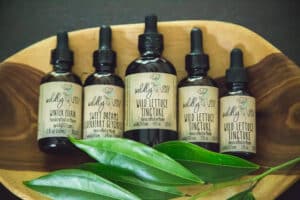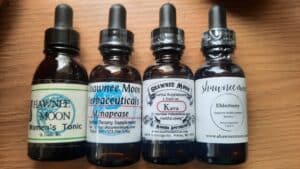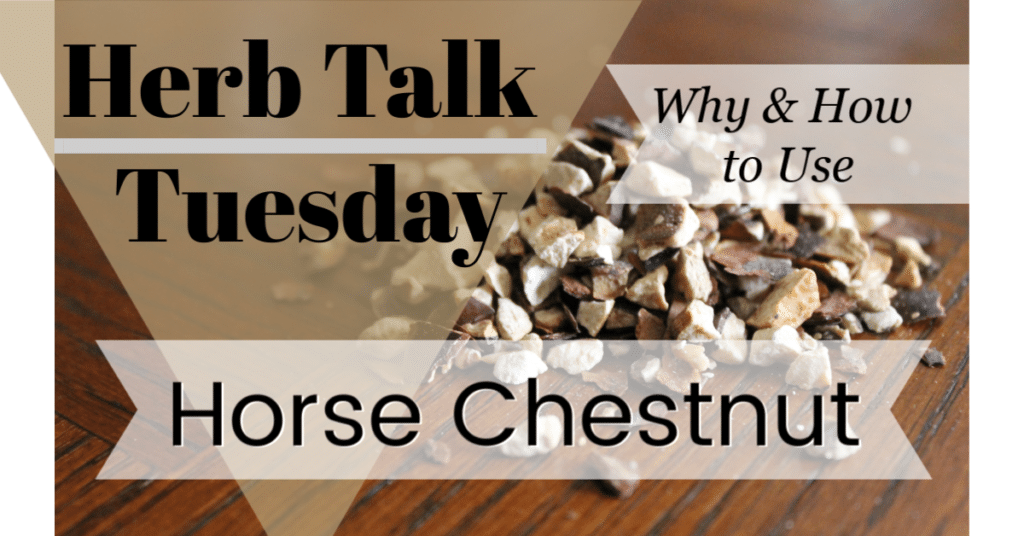
Welcome back for another Herb Talk Tuesday, with me, Kerry Brock. Pour a cup of coffee or your favorite tea and let’s learn together about the Horse Chestnut tree!
Where can you find Horse Chestnut? How can you identify it?
Horse chestnut (Aesculus hippocastanum) is a native of south east Europe, but can be found in many temperate regions (Here in North America and many other places) as it is a popular ornamental tree in landscaping thanks to it gorgeous blossoms in spring.
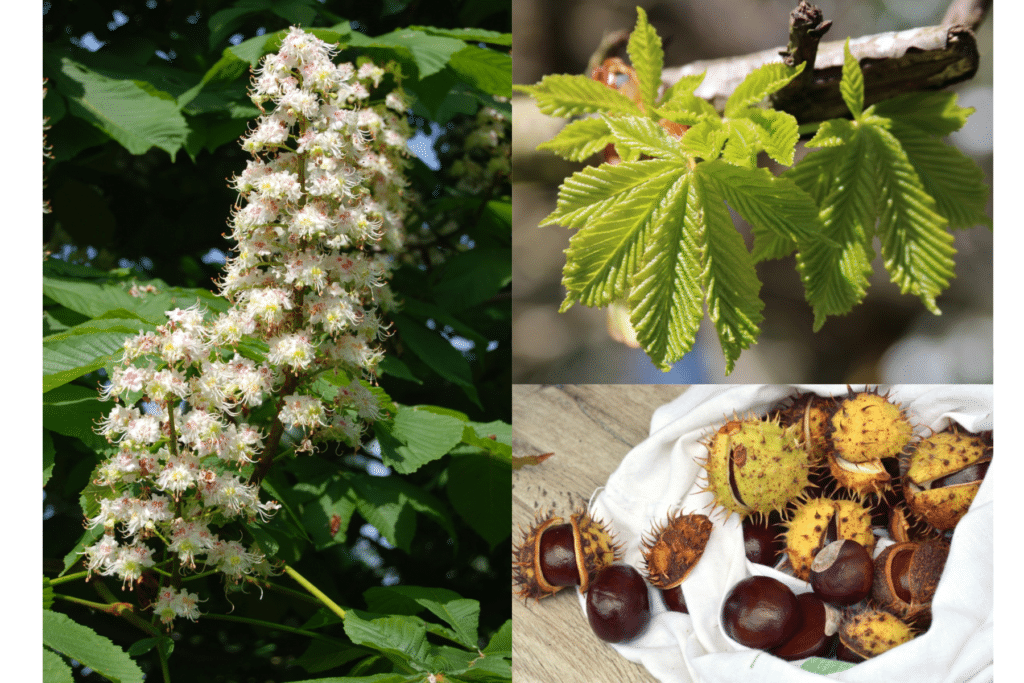
It is considered a “large deciduous, flowering tree”, growing up to 128’ tall. The branches are generally short and stout, and the leaves grow in bunches of 5-7. When these leaves fall in autumn, they leave ‘scar’ at the junction of the stems that is ‘horseshoe’ shaped.
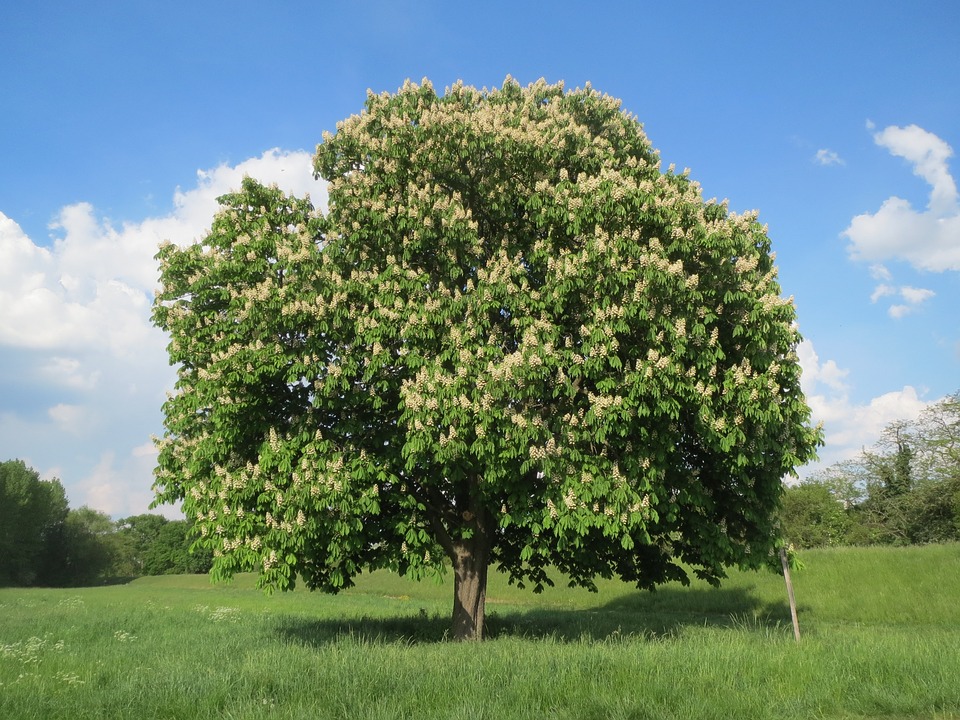
How do you use Horse Chestnut?
The leaves and bark are used sometimes, but more often, the dried seed/nut is used in topical preparations. This herb is NOT suggested for internal use!
Important to note, do not confuse Horse Chestnuts with ‘true chestnuts’, the ones you ‘roast over an open fire’, they are completely different species’. Although true chestnuts are edible and delightful, young, fresh horse chestnuts are slightly poisonous to humans in large doses (causing nausea)! Be sure of your identifying abilities before you eat a boatload of wild nuts.
Horse chestnut is considered a circulatory tonic, meaning it supports a normal healthy circulatory system. It supports strong, healthy, normal veins, stimulating normal contraction and circulation. In general it is good for skin health, it is a tightening, strengthening tonic and is especially suggested added into your body lotions or a simple ointment for your legs.
Check out all the Shawnee Moon products that contain Horse Chestnut here.
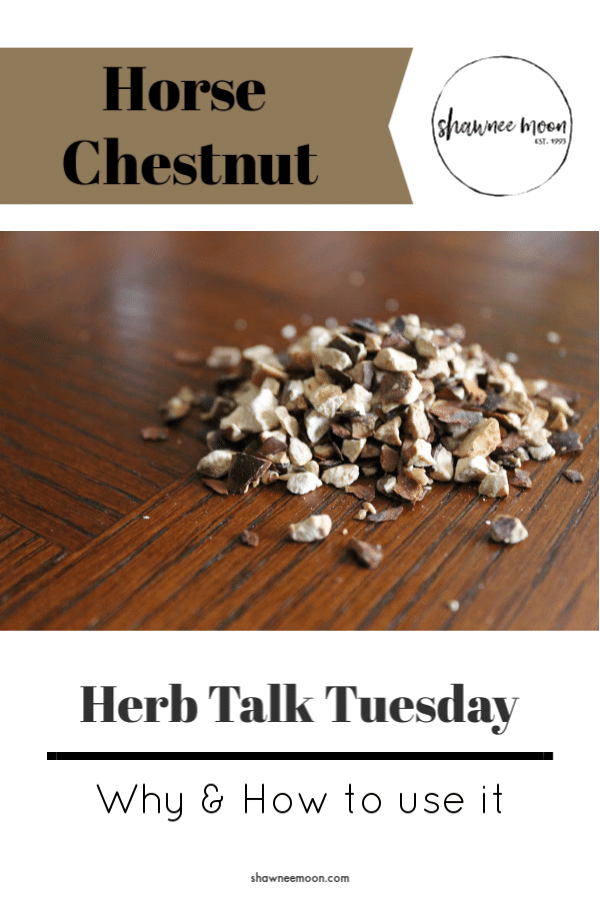
Make your own Horse Chestnut salve
Last week on our Herb Talk Tuesday post, we discussed Chickweed and I shared a recipe for a simple salve that you could make yourself! Head over to that post and use the same recipe for your own Horse Chestnut salve. Simply replace the chickweed herb for the same amount of horse chestnut seeds
What is your experience?
Horse chestnut is not a widely used herb. It is generally utilized for a small, very specific set of issues. What is your experience with this plant? Do you have one growing in your landscaping, or perhaps some at a local park?
Please share what you know and love about this beneficial tree! Comment here below, or head over to our closed FB group (request to be added and answer the questions!) and join the conversation!
Thank you for reading, and I’ll see you next Tuesday,
Blessings in Christ,
Kerry


